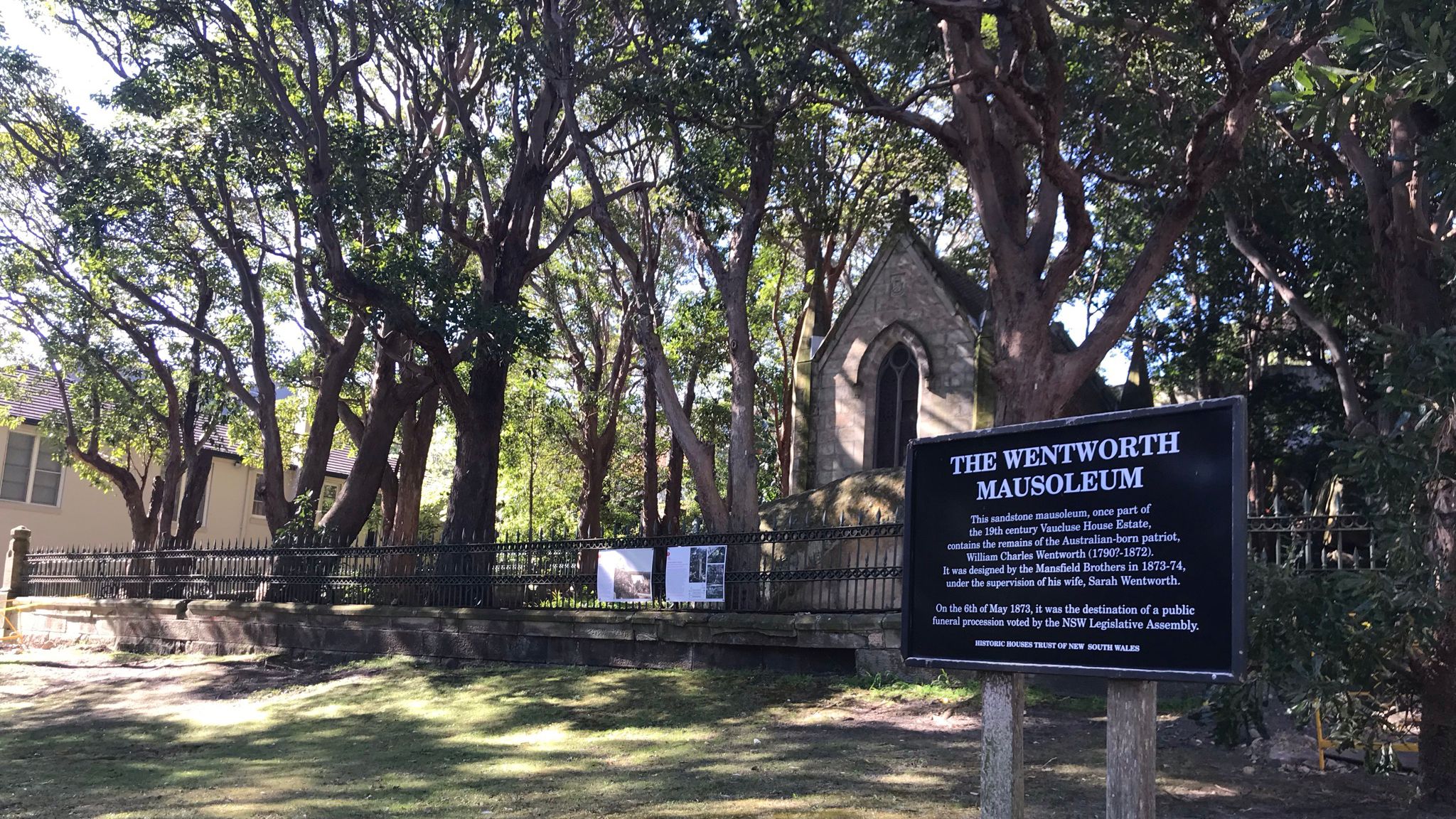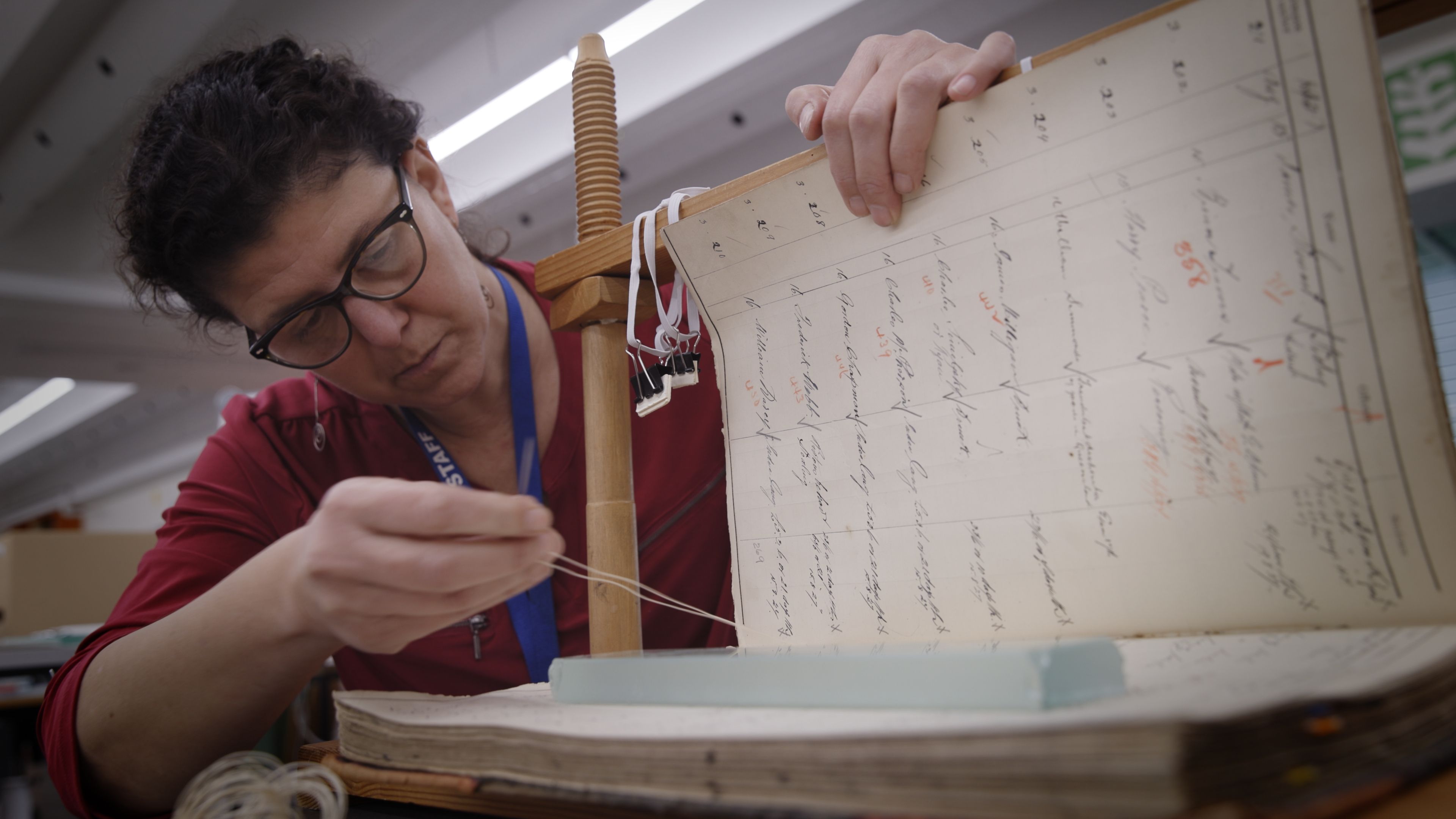Finishing the interiors at Justice & Police Museum
As part of our ongoing program of maintenance, we were delighted to renew the interior finishes at the Justice & Police Museum.
Get a glimpse of the recent works here, including timber repairs, painting, french polishing, and sandstone cleaning or drop in to the Justice & Police Museum to see for yourself one Saturday or Sunday.
Water Police Court: graining the clerestory windows
Historically, clerestory denoted the nave of a Romanesque or Gothic church, the walls of which rise above the rooflines of the lower aisles and are pierced with windows to allow light into the larger central room from above.
The simplified graining painted finish of the Water Police Court clerestory windows was breaking down due to its age and its east or west aspect. The image above shows steps in the painting approval process.
Note the pink undercoat on the sill compared to the slightly more orange above on the sash. We used the pinker undercoat then, after the pink had dried, we mixed a clear gloss/dark stain mixture for the contrasting top coat.
The painter steadily guides the brush bristles skilfully along the surface, leaving just the right amount of dark and clear over the lighter undercoat to emulate wood grain.
This faux grain technique is often used to match different species of timber to the species nearby; in this case oregon windows and frames are being matched to the cedar panelling and joinery in the court.
Interior joinery
Painstaking work by skilled painters is needed to return lustre to the museum interiors.
Painting the verandah
The sandstone verandah, with its western aspect, is impacted by the full force of the afternoon sun.
Periodic maintenance painting seals water out of the timber façade joinery and returns the rich gloss appearance.
Did you know that darker colours break down more quickly than lighter colours because they absorb more heat?
Gloss finishes allow water and dust to slide off where matt finishes hold dust and moisture which accelerates weathering.
Regular washing protects paintwork and prolongs its lifespan.
Painting the verandah
The sandstone verandah, with its western aspect, is impacted by the full force of the afternoon sun.
Periodic maintenance painting seals water out of the timber façade joinery and returns the rich gloss appearance.
Did you know that darker colours break down more quickly than lighter colours because they absorb more heat?
Gloss finishes allow water and dust to slide off where matt finishes hold dust and moisture which accelerates weathering.
Regular washing protects paintwork and prolongs its lifespan.
French polishing in the courts
French polishing is a wood finishing technique that can result in a very high gloss surface.
French polishing consists of applying many thin coats of shellac dissolved in alcohol using a rubbing pad lubricated with oil. The rubbing pad is made of absorbent cotton or wool cloth wadding and is commonly referred to as a fad, a rubber or a mouse. French polishing is a process, not a material; the main material is shellac.
The finish is considered to be a beautiful way to finish highly figured wood such as the cedar joinery in the Justice & Police Museum courts, but it is also recognized to be a fragile finish. It is softer than modern varnishes and lacquers and is particularly sensitive to spills of water or alcohol, which often produce white cloudy marks. Shellac is also susceptible to damage from heat, which is why hot cups will leave a cloudy ring. As a positive, it is easier to repair than a damaged varnish finish, as patch repairs to french polish may be easily blended into match the surrounding finish.
As with all timber finishes, French polished timber requires regular maintenance to nourish and rejuvenate it, to return the lustre and protect the underlying timber.
The first step in the process is to remove dried shellac and any grime using a mix of linseed oil, pure gum turps and a solvent. Following this, successive coats of shellac are applied as seen in the image here.
Blemishes are blended in to return the overall beauty of the cedar panelling.
Graffiti is an ongoing issue in the police court and the cells. Grain filler in a matching colour is applied to fill the deeper gouges before shellac is used to finish.
The final step: Andy uses a mouse to add a couple of coats of shellac to return lustre to the final finish. Note the fine joinery repair at the bottom of the photo attributed to Public Works craftsmen of the 1990s.
Protective barrier for the original cedar screen
The Water Police Court is a popular venue with corporate clients and the former public gallery is where the audio-visual magic happens.
We’ve installed a removable protective screen to enable the AV techs to focus on their role while the precious historic building fabric remains conserved.
Heritage sandstone floor cleaning
The impact of many events, tours and traffic had taken its toll on the sandstone floors at Justice & Police Museum. We needed a method to dissolve water-soluble and greasy marks left by spilt rubbish, coffee, shoe grease and a myriad of other misfortunes that grace the floors of our busy museum.
The stone masons at Artisan of Stone were engaged to address the cleaning using a product called Heritage One.
It is porridge-like in consistency, contains secret tree extracts from South America, and is applied by trowel in a thin poultice that is left to soak into the stone and dry over several days.
Once stage one drying is complete, ‘captive-head’ washing is used to remove the poultice and the stains.
Scrubbing with a stiff brush and water loosens the last of the stains and poultice. It is all collected into a holding tank and removed from the site.
The result exceeded expectations: once again, the sandstone shows off its beautiful subtle tones and rich veins of colour.
Published on
Conservation
![Government Printing Office; NRS 4481, Glass negatives. NRS-4481-4-44-[AF00194836] Immigration Barracks Sydney, August 1871 [Department of Public Works]](https://images.mhnsw.au/fotoweb/embed/2024/03/b437216ff79d433da2d3b92c8bb24e51.jpg)
Conservation
Conservation in action: Hyde Park Barracks northern range refurbishment works
In collaboration with experienced heritage consultants and traditional tradespeople, MHNSW is undertaking conservation works to the northern range buildings

Conservation
Vaucluse House kitchen garden
The Vaucluse House kitchen garden recently underwent a significant rejuvenation project to preserve the site and allow it to continue to be used as a valuable educational resource

Wentworth Mausoleum perimeter fence conservation
MHNSW is undertaking the first comprehensive conservation works to the fence surrounding the 1870s resting place of William Charles Wentworth

Conserving the archive
Supervising conservator Dominique Moussou talks through her work and some of the projects underway in the MHNSW conservation lab
